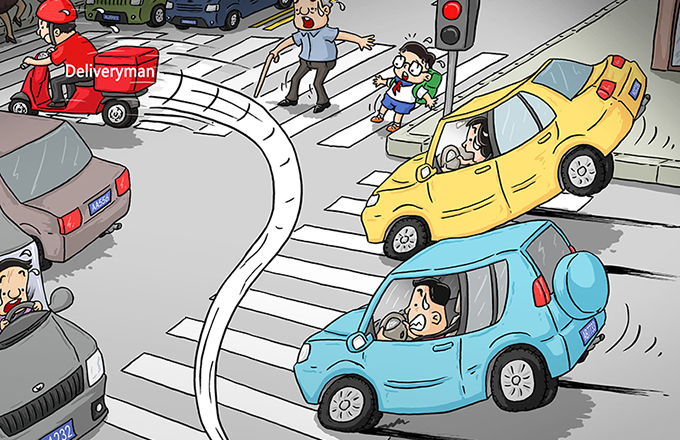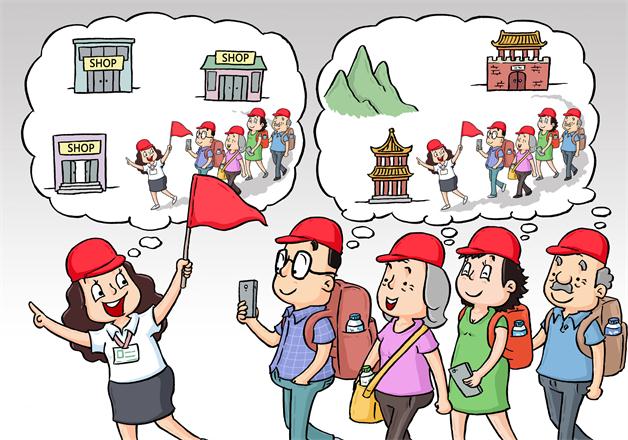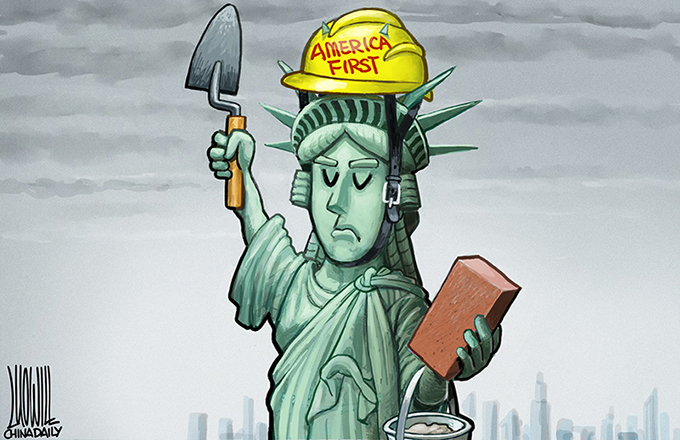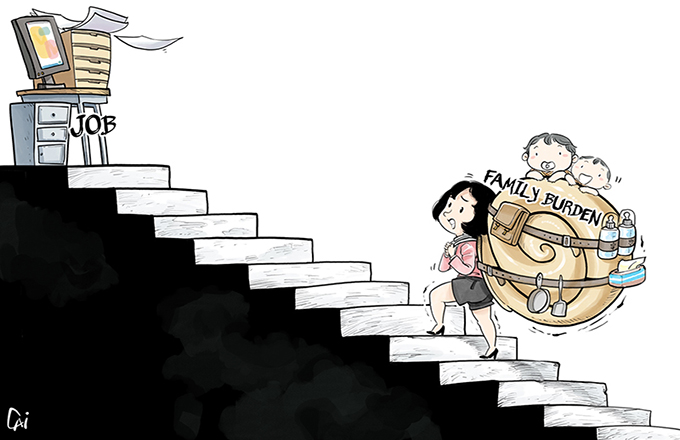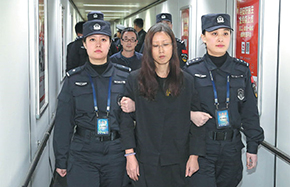Development of China's Public Health as an Essential Element of Human Rights
IV. Great Improvement in the Quality of Medical and Health Services
China is committed to improving the accessibility and convenience of medical and health resources, and the quality and efficiency of medical services at the same time. It aims to accelerate the building of an integrated medical and health service system of good quality and high efficiency, and improve the medicine supply system. More and more people are satisfied with their visits to hospitals.
The resource factors of the medical and health-service system keep increasing. From 2011 to 2015, China invested RMB42 billion to support the building of 1,500 county-level hospitals, 18,000 town and township health centers, and more than 100,000 village clinics and community health centers. By the end of 2016, there were 983,394 medical and health institutions in China, among which 29,140 were hospitals (12,708 public hospitals and 16,432 private ones), 36,795 town and township health centers, 34,327 community health centers (stations), 3,481 disease prevention and control centers, 2,986 health inspection institutes (centers), and 638,763 village clinics; there were also 5.291 million items of medical equipment each worth RMB10,000 or more, among which 125,000 were worth more than RMB1 million each. In 2016, the number of beds in medical institutions increased by 395,000 compared with 2015-5.37 beds for every 1,000 people; the number of beds in hospitals increased by 358,000. There were 266 hospitals of ethnic healthcare, with 26,484 beds, providing 9.687 million treatment sessions annually, and the number of discharged patients reached 588,000.
Health personnel optimized. China has built a medical education system of the largest scale in the world. By the end of 2016, there were 922 medical colleges and universities in China, 1,564 secondary schools with medical courses, 238 organizations granting master's degrees, and 92 granting doctoral degrees. The number of students at these schools had reached 3.95 million, among whom 1.14 million were students of clinical majors and 1.8 million of nursing majors. Fourteen educational institutions now offer specialties in ethnic healthcare, and research into ethnic healthcare in TCM majors, with about 170,000 students. TCM colleges in Yunnan, Guangxi and Guizhou offer undergraduate specialties of healthcare of the Dai, Zhuang and Miao peoples. Some ethnic-healthcare colleges and TCM colleges cooperate to cultivate personnel specializing in ethnic healthcare. By the end of 2016, the number of health workers totaled 11.173 million, with 8.454 million technical personnel, and 2.31 physicians for every 1,000 people; practicing (assistant) physicians with a college degree or above made up 81.2 percent of the total. The number of high-caliber professionals is increasing year by year. The number of nurses for every 1,000 people has reached 2.54, and the ratio of doctors to nurses has reached 1:1.1.
The nongovernmental sectors operating hospitals are growing. China supports nongovernmental sectors in starting nonprofit medical institutions, and promotes equal treatment between nonprofit private hospitals and public hospitals. We encourage physicians to make use of their spare time, and retired physicians to work in community medical and health institutions or open clinics. Private hospitals now account for more than 57 percent of all hospitals, the number of beds in medical and health institutions operated by nongovernmental sectors has increased by 81 percent compared with 2011, and their outpatient visits take up 22 percent of the total in China. Now, of the physicians who have obtained licenses that give them permission to work for more than one organization, more than 70 percent also work in medical institutions operated by nongovernmental sectors.
Community and rural medical conditions further improve. China gives priority to community and rural medical development in terms of the establishment of medical and health systems, the setting up of medical service institutions and the team building of medical service personnel. It takes county-level hospitals as the medical and health centers of the county, and places them at the core of the three-tier rural medical and health service network at the county, township and village levels. It focuses on the operation of one or two county-level hospitals (including TCM hospitals) in each county (city). Now almost every town or township has a health center, every administrative village has a village clinic, and every 1,000 rural residents have a village doctor.
Medical and health service supply is becoming more refined and targeted. China has established a mechanism for serious illness prevention and control that combines professional public health institutions, general and specialized hospitals, and community medical and health institutions. We are enhancing the mechanism for information sharing and interconnection, promoting the integrated development of chronic disease prevention, control and management, and realizing the combination of treatment and prevention. We are building a comprehensive classified diagnosis and treatment system, guiding the formation of a rational medical treatment order featuring primary treatment at the community level, two-way transfer treatment, interconnection between different levels and different treatments for acute and chronic diseases, and improving the service chain of treatment, rehabilitation and long-term care. The diagnosis and treatment rate based on appointments in Grade III hospitals has reached 38.6 percent, and nearly 400 medical institutions have set up ambulatory surgery centers. We are also providing family physician contracted services. More than 80 percent of citizens are satisfied with the skills and attitude of family physicians. The people's service experience has greatly improved.
The quality and the safety level of medical services continues to rise. We have formulated Medical Quality Management Measures, gradually established and improved the medical quality management and control system, released quality control indicators, and conducted informationalized quality monitoring and feedback. We have promoted clinical pathway management (CPM) by developing 1,212 clinical pathways, which cover almost all common and frequently occurring diseases. We have released and implemented the National Action Plan to Contain Antimicrobial Resistance (2016-2020), to resolve the problem of antimicrobial resistance in a comprehensive way. We have also strengthened supervision over prescription and drug use. In 2016, the rate of inpatients using antibacterial drugs was 37.5 percent, 21.9 percentage points lower than in 2011; the usage rate in outpatient prescriptions was 8.7 percent, a decrease of 8.5 percentage points compared with the rate in 2011. Medical liability insurance covers more than 90 percent of hospitals at Grade II and above. We attach great importance to blood safety and supply. By the end of 2015, we had realized the full coverage of nucleic acid tests in blood stations, with a blood safety level equivalent to that of developed countries. We also encourage voluntary unpaid blood donations and rational clinical use of blood. In 2016, 14 million people donated blood gratis, an increase of 6.1 percent over 2015 and almost satisfying the demand for clinical blood use. Donation has become the main source of organs for transplants.
The drug supply security system keeps improving. This system, based on the national basic drug system, has made great headway. Since the implementation of the policy, the prices of basic drugs have dropped by about 30 percent on average, and basic drugs have been sold in community-level medical and health institutions with zero markup, easing the financial burden on patients. We initiated the first round of pilot projects of national drug price negotiation, reducing the purchasing prices of drugs for hepatitis B and non-small-cell lung cancer by over 50 percent, making them the lowest in the world. By the end of 2016, the patients' expenses had been reduced by nearly RMB100 million. We have also improved the policy that ensures drug supply for rare diseases, and increased the free supply of special drugs, for instance, drugs for the prevention and treatment of HIV/AIDS. China encourages medical and pharmaceutical innovation, launching a key project named the National New Drug Innovation Program. From 2011 to 2015, 323 innovative drugs in China were approved for clinical research, 16 innovative drugs including Icotinib Hydrochloride Tablets were approved for production, 139 new chemical generic drugs entered the market, a total of more than 600 Active Pharmaceutical Ingredients (API) and over 60 pharmaceutical companies reached the international advanced GMP standard, and a number of large medical equipment such as PET-CT and 128-MSCT, and advanced implantable products including brain pacemaker, bioprosthetic valve and artificial cochlea have been approved and entered the market. We have promoted the building of a modern medical and pharmaceutical distribution network that covers both the urban and rural areas, and strengthened drug supply security at the community level and in remote areas.
TCM is receiving more support from the government. From 2013 to 2015, China invested a special fund of RMB4.6 billion to support the capacity building of TCM. In 2016, it issued the Outline of the Strategic Plan on the Development of Traditional Chinese Medicine (2016-2030). The revenue generated by Chinese medicine producers each with turnover over RMB20 million per annum reached RMB865.3 billion in that year, accounting for about one third of the total revenue generated by all the drug producers each with turnover over RMB20 million per annum in China. Since 2011, 49 achievements in TCM scientific research have received national science and technology awards. Artemisinin, medicines for curing acute promyelocytic leukemia and other TCM and Western medicine research findings have attracted worldwide attention.



